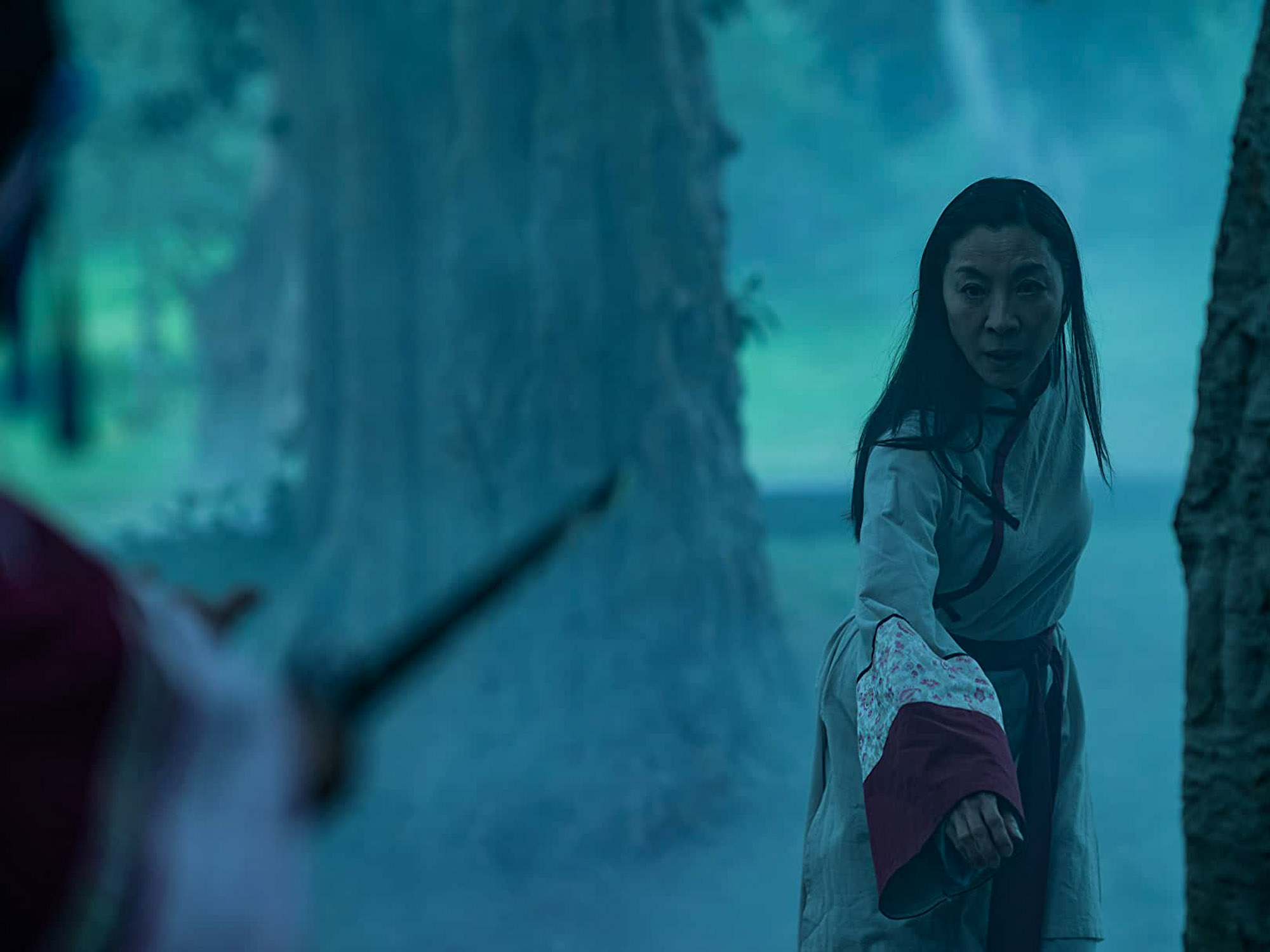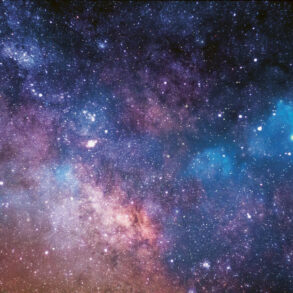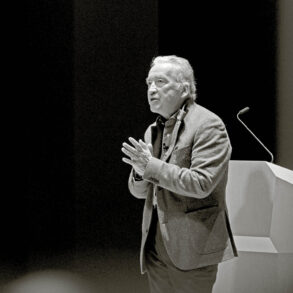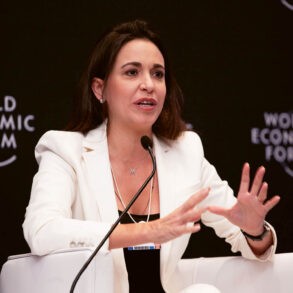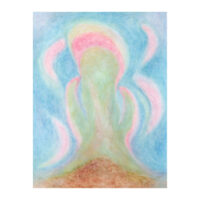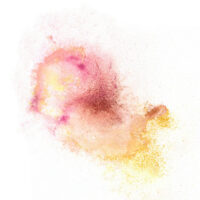This year’s Oscar for Best Picture went to a movie called Everything Everywhere All at Once, a hyper post-modern, science-fiction film with a hefty serving of reality-bending, imaginative magic. The movie has become the most awarded film of all time, surpassing The Lord of the Rings: The Return of the King, which held the record for the last 20 years. Here is a review of the movie and its connections to questions of the Consciousness Soul. Warning: slight spoilers.
The film centers on a married couple who immigrated from China to the United States, opening at the moment when they are struggling to navigate generational and cultural differences, prepare for a Chinese New Year party at their laundromat, and pay their taxes correctly. As the tension mounts, the husband prepares to give legal papers to his wife, the main protagonist, asking her for a divorce. This convergence of crises quickly becomes a multi-dimensional battle against a version of the couple’s daughter from another universe. There, techno-mystics have figured out how to connect with parallel universes and access capacities developed in other lifetimes. This version of the daughter is said to have a “fractured mind,” in which she’s lost all sense of morality and this fracturing has unleashed immense power. In a fit of boredom and curiosity, she has condensed this cosmic chaos into a sort of black hole-bagel which threatens to destroy the multiverse—a symbol of an absurd, all-consuming everything-nothingness, around which a sort of cult develops. Only the protagonist, who alternates between genius and helplessness, can save the multiverse.
The film explores fundamental questions of the era of the Consciousness Soul, now intensified in our hyper-postmodern situation. The shattering of traditions and limitations gives birth to both chaos and freedom. Amidst this groundlessness and sprawling potential, new questions about morality and selfhood arise. Both big biographical decisions and small actions take on a new weight of importance—choosing one path cuts off an incredible number of other possibilities. Likewise, intensified freedom fractures cultures and relationships, generates great new evils and presents an ordeal for love to renew itself. All these compounding challenges happen in an increasingly condensed timeframe: everything everywhere all at once.
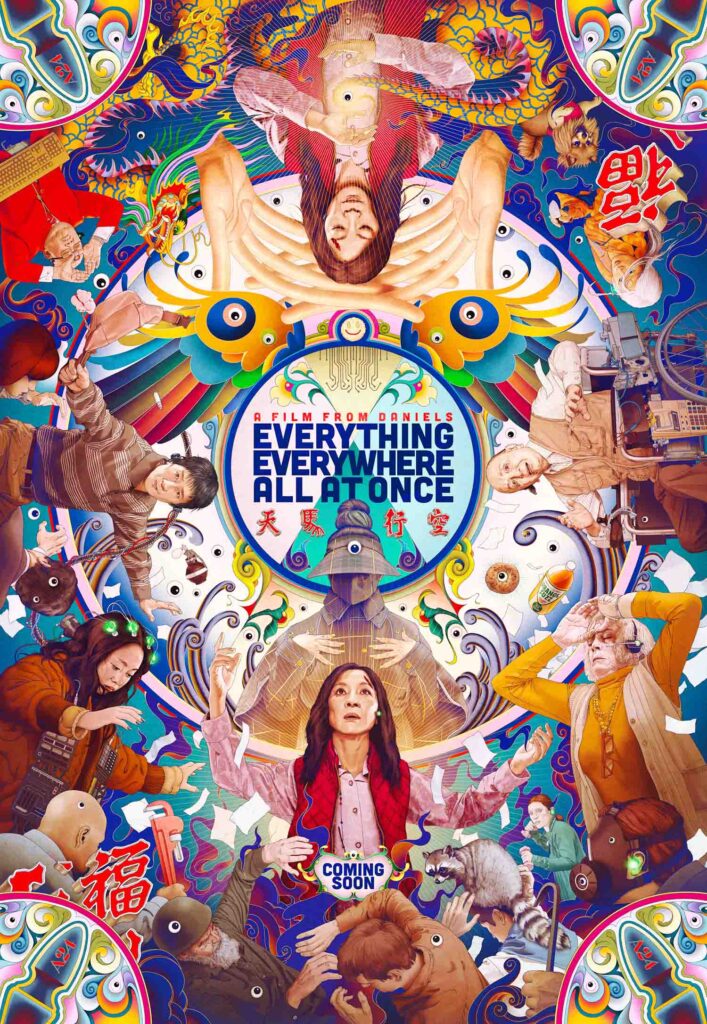
Love out of freedom requires this cosmic crisis, in which old worldviews shatter and disintegrate. We must endure these fractures, contradictions, and confusions so that we can create ever-more integrated worldviews and learn to regenerate love out of a greater consciousness. The protaganist must go through simultaneous empowerment and disillusionment, tasting the fullness of chaos and the breakdown of order so that she can be liberated from outworn fears and anxieties and bring forth her creative, imaginative potential. It’s not taken for granted that she will rise into love. Nihilistic chaos threatens to win out. Only her husband’s simple but overflowing love brings her back from the abyss, and compassion reigns in the face of confusion and fear.
The central battles in the film are largely ones of imagination and mental power, in which creative leaps of mind generate the power to transform any object or connect with capacities developed in any lifetime that, existing in potential, actually exist. The film is undoubtedly violent and lewd, perhaps in an intentionally jarring manner, but it shows that absurdity is a powerful aspect of the imagination and that chaos can be an invitation into creativity. The protagonist wields a potent imagination but suffuses it with life-affirming, compassionate joy, and in so doing, love wins out over cynicism.
It seems meaningful that this movie came out the same year that AI made such a splash, breaking open so much possibility and breaking down so much that was previously taken for granted. We’re undergoing a compression of time that some might think of as an acceleration towards the ‘singularity’, but that actually just looks like overwhelm for the majority of us: everything everywhere all at once. We’ve unleashed tremendous creative potential and it’s important that we explore and familiarize ourselves with it, but at the end of the day, what’s most crucial is that we wield this power in service of love. Is it not the power of the human spirit alone that is capable of generating value and putting back together the shards of an increasingly fragmented world? Likewise, the crackling and potentially consuming creative power of technology casts the rest of mundane life in a new light: perhaps a life of laundry and taxes is actually profoundly beautiful.
Title image Screenshot ‹Everything Everywhere All at Once›

